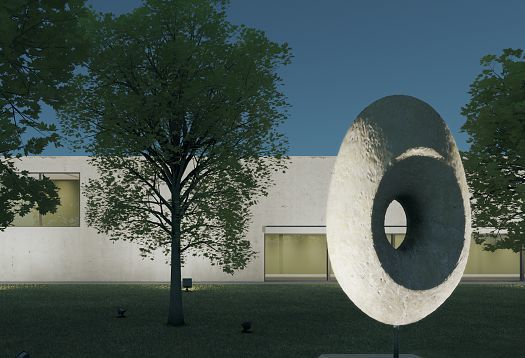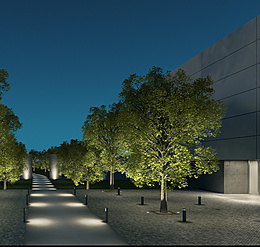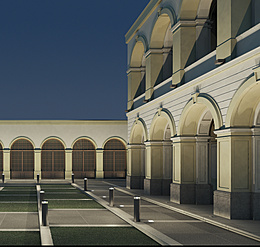
The impression of proximity and depth can be either intensified or reduced with light. Bright objects attract attention and therefore appear closer than unlit objects. This means that the impression of perspective in a room or space can be shaped by the brightness distribution between foreground, middle ground and background. Here, projectors accentuate the sculpture standing in the foreground, while floodlights illuminate the trees in the middle ground. The uniform, vertical illumination of the building in the background is provided by wallwashers.







